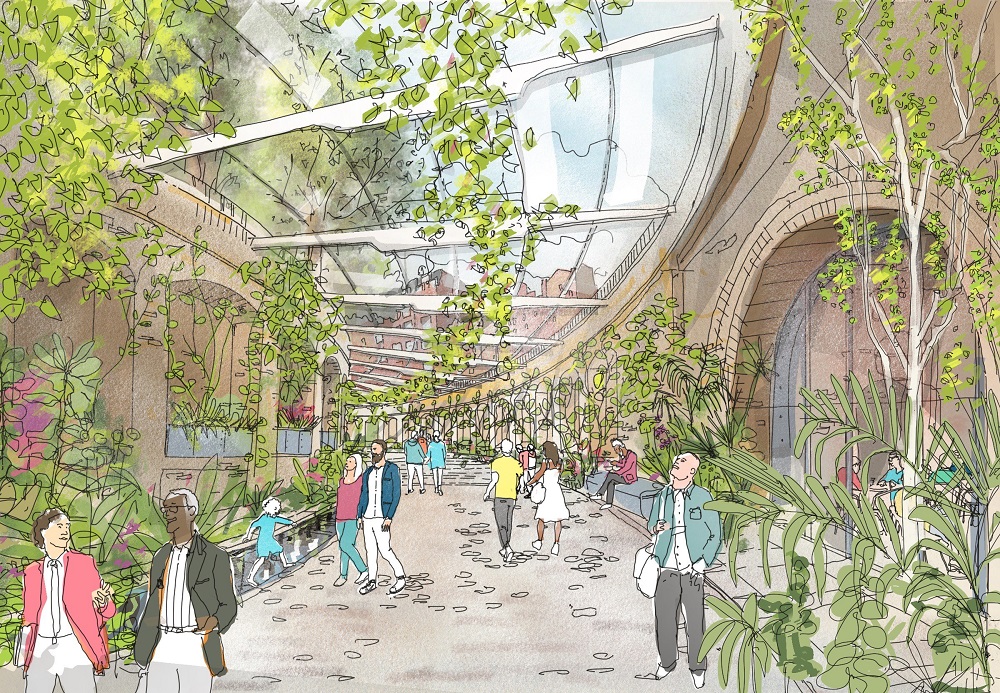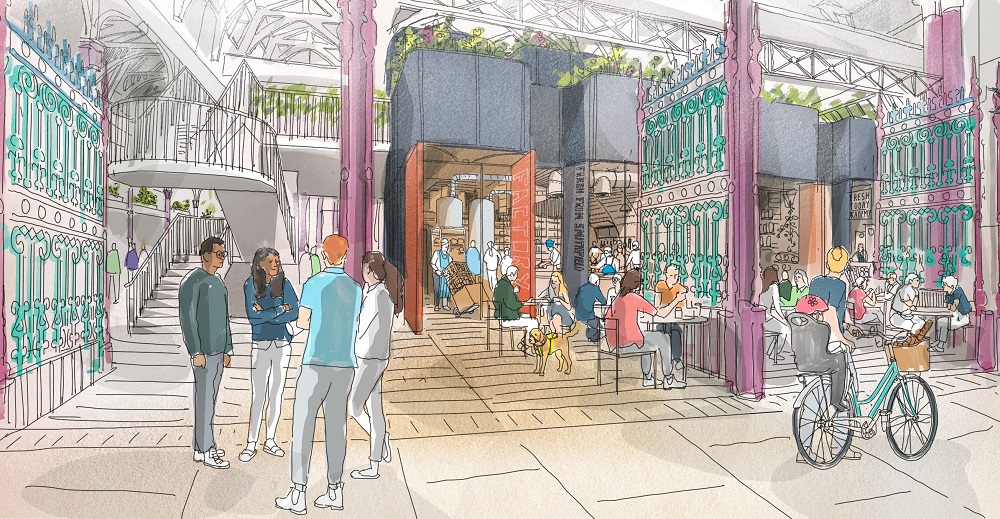The City of London Corporation has revealed its early ideas to re-imagine the Grade II* listed East and West Smithfield buildings and the Grade II Rotunda as the heart of a thriving and inclusive London.
Key place principles and sensitive interventions are proposed to create a destination that could accommodate a myriad of exciting uses should the meat market move.
A core theme is sustainable food production, preparation and consumption all under one roof, as well as the creation of flexible halls that could support the creative industries.
The focus of the design concepts has been the East and West Market buildings that are currently home to Smithfield meat market, for which the City Corporation has recently submitted an outline planning application to co-locate alongside Billingsgate and New Spitalfields markets at a site in Dagenham Dock.
A Private Bill is also required in order to move all three markets and a further iteration of the Smithfield concept designs will be submitted as part of that process later this year.
The future Smithfield will form part of the City Corporation’s vision for Culture Mile, stretching from Farringdon to Moorgate.
Catherine McGuinness, policy chair at the City of London Corporation, said: “These imaginative early designs showcase how the Smithfield East and West Market buildings and Rotunda could be carefully transformed into an exciting destination that reflects their traditional role in the capital’s food chain while also opening up new cultural and entertainment spaces for public use.
“These plans are a key part of our wider ambition to create a vibrant and new world-class Culture Mile at the heart of the historic Square Mile.
“Alongside the new Museum of London, they will help to attract workers, residents and new visitors to the area, as well as meeting our obligations to improve air quality.”
NOW LISTEN: City Natters #12 The Brokerage CEO Katerina Rudiger on social mobility in the City
The initial concept designs have been put together by architecture practice Studio Egret West. SEW is being supported by Alan Baxter Associates, Donald Insall Associates, Max Fordham, Greengage, Spiers and Major, PT Projects, Deloitte, Iceni, and This Must Be The Place.
The early concept designs propose removing some of the more modern additions to the market buildings, including the loading bays, canopy, and cold rooms to reveal the Victorian structure.
This would create four large, clear areas under the oversailing roof that would be highly adaptable for a wide range of future uses, allowing the building to respond to future demand, as well as accommodate the anticipated increased footfall in the area as a result of the Elizabeth line.
One of the newly exposed four halls could house a sound-proofed multi-media entertainment space for local performances and cultural acts throughout the year, alongside independent food and drink kiosks – offering spaces for local start-ups and micro industries to develop and grow.
Flanking the Grand Avenue, new freestanding units could host a number of education and training programmes throughout the year, offering opportunities for Londoners of all ages to explore careers in the food industry.
The City Corporation is now seeking feedback on its initial concept designs for the site as it continues to bring forward more detailed plans.
David West, founding director of Studio Egret West, said: “This truly is a once-in-a-lifetime opportunity to set the direction for the restoration of these much-loved structures, and we believe the principles and interventions we are presenting will deliver the right balance of ambition, opportunity and flexibility for this next chapter in Smithfield’s history.”
Members of the public will be able to share their feedback on these initial concepts until 4 September 2020.
The City of London Corporation, which owns and manages Smithfield, New Spitalfields and Billingsgate Wholesale Food Markets, is the fourth largest funder of heritage and cultural activities in the UK and invests over £100m every year.
For the latest headlines from the City of London and beyond, follow City Matters on Twitter, Instagram and LinkedIn.








